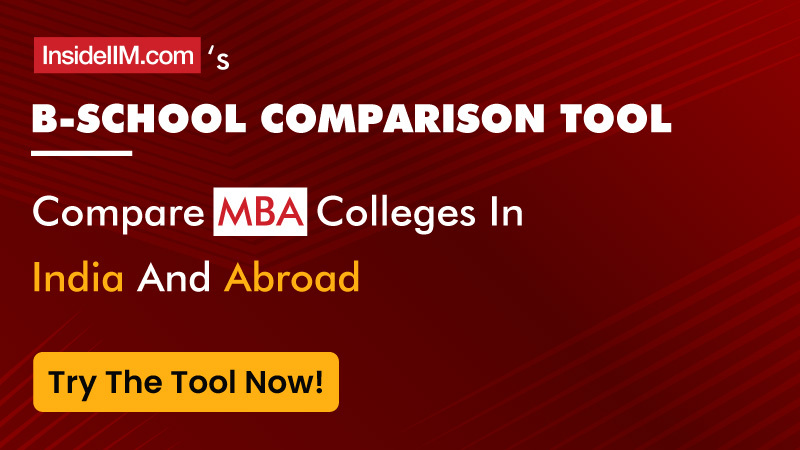The External Relations Cell of IIM Calcutta presents the 6th episode of the Insight Series. For this edition, we have with us Prof. Anirvan Pant from the Strategic Management Group, speaking on the evolution of the IT Sector in India and how some of the Indian IT Firms successfully transformed to becoming MNCs. The Indian IT industry as you all know with a strong revenue base of $115 billion has been a significant contributor (8%) to the GDP of India. Prof. Pant, with significant experience in this industry, has shared his insights with us.
Find below the transcript of the interview we had with him.
What do think are the challenges that the Indian firms face while going global?
So Raghav, at the outset I can say that, that is a very interesting question to start with because the Indian IT industry has been an essentially outward oriented industry, and by the Indian IT industry of course I mean specifically Indian IT services industry. That said, I would like to underline a point that you said earlier. I do not have experience in this industry so to speak, I have studied this industry and I have an outsider perspective, which is valuable in parts but it also does not have the practitioner’s intimacy. In terms of the challenges that Indian firms face, which interestingly also applies to this industry, I think these can be best understood in terms of what we call The Liabilities of Origin. Let me spend a few minutes on what we mean by liabilities of origin.
When firms go abroad they face challenges because they enter unknown territories. The phrase Liability of Foreignness has been used extensively in the international business literature to explain this phenomenon. I would argue that in addition firms from countries like India, and I will explain what I mean by ‘countries like India’, face an additional set of challenges which we call as the liabilities of origin. Not only do they face the Liabilities of Foreignness, which is that of being a stranger in strange land, so to speak, and they also face the liabilities of origin, which is set of disadvantage that emanates form their origin from a certain location. In this case that of India. And what we mean by their location in India is that being headquartered or having a base of your operations in a developing/emerging economy like India, and I am using the two synonymously, imposes on you certain burden. There is the set of disadvantages that relate to the institutional context to start with, and what are these disadvantages. There are the disadvantages pertaining to the lack of managerial talent fro going abroad, the lack of patient capital that you need for going abroad because internationalization is not something that bears fruits immediately. These institutional resources are not available in abundance in developing/emerging economies and they thereby constitute a liability for the firm in the country seeking to go abroad. There is also a whole issue perception in those countries. Now, I spoke about the liability of foreignness. All foreign firms have the liability of foreignness so to speak. Amongst the foreign firms, those that are from countries like India that are perceived to have low quality face an additional disadvantage. Mind you, this perception is independent of actual underline quality. It is possible that the perception accurately gauges the underlining quality, but more likely than not that perception is independent of that quality and even as you raise your quality levels the perception may continue to be negative. This is other part of the so called Liabilities of Origin.
And then there is a third part which emanates from the so called organizational context and that is that firms from India, seeking to go abroad also face challenges in terms of the cognitive processes inside the organization in terms of self doubt. Can we really pull this off? Because they aren’t too many examples. To a certain extent with the whole series of big ticket acquisition in recent years you would say perhaps this has changed. The incidence of overseas growth, either inorganically through acquisitions or organically has not really deeply sieved into the broader population of growing Indian firms. So the element of self doubt, or it could also go to the other extreme. Overconfidence, given that you do no understand what it takes to go international, you don’t have too many peer cases you could also suffer from overconfidence. So there are these multiple layers at the institutional, organizational and competitive level that shape what we call Liabilities of Origin. And I do believe that this constitutes a unique so to say burden that the Indian firms need to carry, confront when they go abroad.
Sir, in view of the various factors that you discussed here, how do you think the Indian IT sector approach this problem and how were they able to overcome these specific challenges that you mentioned?
So well there are two ways in which I would address this question. Did the Indian IT industry take cognizance of these problems and figure out the strategies so-to-speak I am not sure. Partly what they did has emerged from a certain process of improvisation as you engage with the uncertainty outside and the opportunity outside. That said, looking back we could look at certain pattern which I think is fairly instructive. And what we see in that pattern is attention to the process of building legitimacy or credibility. So how do you build credibility in most countries, given all those issues we discussed earlier, in particular you need to confront the issue of perception. So, Indian IT services, lets assume that Indian IT service is able to provide a very high quality of services, high reliability, etc. But your clients in the US, but lets say your client in the US still see you as coming from a land of snake charmers. How would you confront that? That is where you need to build this process of credibility. So building credibility under such condition is something that typically strategy doesn’t emphasize on but that is being, I would suggest, central to how these firms build their advantage in the United States.
Sir, what was this process of legitimization, if you would like to throw some more light on it.
Indeed. So lets continue with this example of the Indian IT industry. There are few things that stand out. One is explicit attention to key host countries stakeholders. Now who would be these key host countries stakeholders be. These are, you know one way of putting it is to look at the clients who are also opinion makers – The lead clients. So you could argue that in the early years Indian firms have disproportional value to some of the big clients, the early clients for example General Electric, because recommendations emerging from such key clients hold a lot of value in the host country and also engaging with the institution and the norms of that country. So for example most software engineers would have heard of the capability maturity model which today is a central mode of process control in this industry. Where did this come from? This goes back to work done for the US department of defense by Carnegie Mellon University in order to help them evaluate software vendors. What is interesting is that it remained a kind of niche measurement tool until Indian firms picked it up, improvised it, built it further and in ways gave the kind of scale required to make it a globally accepted and understood tool for measurement. And they needed a tool for measurement that was acceptable to the US clients. And the tool developed in the Carnegie Mellon University would be acceptable to most US clients. But the tool also needs a bunch of adopters who would provide the scale. So this is a nice virtuous cycle of dependence so to speak. These are few examples of the process of building credibility that the industry engaged in its early years.
Sir, till now like we have been generally discussing the Indian IT industry as a whole. But given that there are large number of firms operating in this segment and there are a lot of successful firms like TCS, Infosys, Cognizant and there are few multinational firms as well. So do you think that after certain point of time they started diversifying and developing their own niche base?
Well you know, I don’t know, but let me interpret the way I would like to because there is a certain point of view here that I am partial about, and since I am more interested in what Indian IT services firms do in general, and here I would include Cognizant and that group, although Cognizant is headquartered in New Jersey, I think it’s interesting how after the Y2K event, after you know the year 2001 when a whole host of Indian firms participated in confronting the millennium bug, and proved their credibility worldwide I would say in many ways that was the point when the credibility of the whole industry got established. Thereafter you may see a certain divergence in how the strategies of the different leading firms have evolved. So lets just take two contrasting examples so to speak. TCS and Cognizant. If you look at analysts’ reports, recommendation today or their quarterly announcements, both of them are reasonably well. Cognizant seems to have stumbled in the latest announcement but if you look at the trend over the last several years they are leading so to speak the pack. I would argue that through the last decade they have built on slightly different models of strategy. And here we can think of a framework that’s very useful provided by Pankaj Gemawat who had looked at concerns of global strategy who says that there are basically three main strategies that form use when they go global.
Youtube Link for the Interview: Insight Episode 6: Prof. Anirvan Pant
One is the strategy of aggravation, i.e. you pay attention to scale and that is where you derive you advantage and the second is you seek to provide customized solution to different kinds of customers to different parts of the world and you would note that this is contradiction to the logic of aggravation and adaptation. And there is this third, the knowledge of arbitrage. Instead of trying to change what you do, you take advantage of the distinctive aspects of a certain location or a certain domain. So for example the whole idea of providing software services out of India to the US is based on the premise of low cost which is an aspect of Arbitrage but there are many aspects of Arbitrage. There is the symmetry in the talent pools, the asymmetry in the clock, right? So when there is night (here), its day there. So there are many opportunities of Arbitrage. Arbitrage is what provides the foundation for this industry. But if you look at what TCS and Cognizant did on that base of arbitrage is that I would suggest TCS has gone down the route of aggregation. And Cognizant has gone down the route of adaptation, over time. And these two different strategies get revealed in the announcements they make and the way their structures have evolved over time. For example, Cognizant very much wanted two in a box model, is essentially a model that tries to give the service quality, or claims to give the service quality or service experience of a top tier consulting firm at the price point of an IT services firm. It is essentially building on the adaptation advantage. Whereas if you look at TCS and how they have been talking of reliability and some years ago they had this experience certainty campaign that builds upon this whole logic of aggregation. What else can we use scale for? Well we can use scale for reliability, which no one has done in that manner so far. So, they both built on arbitrage as did the entire industry and then they diverged. So that is one way of looking at how even within the industry, which a lot of people believe is a highly commoditized industry in which the only thing that matter is cost, there is lot of strategic difference here.
And sir, how do you see the industry going forward from this point of time? What will be your point of view?
That, Raghav, is a very difficult question to answer. I would hesitate to venture any prediction. This is very interesting industry with several dynamics in terms of innovation as well as in terms of entrepreneurship that they provide. That said, I would in fact continuing from the earlier point I made about adaptation and aggregation, I would thing in many ways in this industry strategy is organization. To break out of the clutter in this industry, you need to pay attention to the structure. Structure is typically seen as subordinate to strategy. To me it would seem that at least in the coming years, structure will be the essential source of competitive advantage in this industry.
I think we had a very stimulating discussion with Prof. Pant. The general perception of the Indian IT industry of not being very innovative and playing the cost factor are some of the perceptions that sir tried to drive away through his insights on the topic. We thank sir for spending time with us on this topic.
Thank you so much Raghav. It was my pleasure. It was great talking to you.













Comments